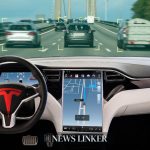In a surprising move that contrasts sharply with previous expansions, Tesla has recently started to reduce its workforce, impacting its U.S. marketing department and several other sectors within the company. This decision comes despite CEO Elon Musk’s earlier encouragement of more aggressive advertising tactics, which marked a shift from Tesla’s traditionally minimalistic marketing approach. Musk’s critique of the company’s past advertising as “too generic” suggests a strategic pivot towards more distinctive and impactful marketing efforts, aligning with broader organizational changes aimed at refining Tesla’s operational efficiency and focus.
A Historical Shift in Tesla’s Marketing Approach
Over the years, Tesla has been recognized for its unconventional approach to marketing, primarily relying on the charisma of Elon Musk and innovative product launches rather than traditional advertising. However, recent developments indicate a significant shift. Last year, under Musk’s directive, Tesla began to dabble more formally in advertising. This change in strategy now appears to be recalibrating, as evidenced by the reduction of the marketing team, which suggests a nuanced approach to how Tesla communicates its brand and products in its next phase of growth.
Insights from Industry Observers
According to a report by Bloomberg, Tesla’s decision to downsize its marketing team, particularly the “growth content” team led by Alex Ingram, may be part of a larger initiative to streamline operations. This move has raised eyebrows among industry analysts, given the recent push into more structured advertising campaigns. An article from Engadget titled “The Shifting Sands of Tech Industry Employment Trends” and another from Reuters named “Automotive Giants Rethink Marketing Strategies” both highlight a growing trend among tech giants: recalibrating workforce and marketing strategies to navigate economic uncertainties and shifting market dynamics effectively.
Scientific Perspective on Corporate Restructuring
A recent paper published in the Journal of Business Strategy, titled “Strategic Downsizing and Corporate Performance,” explores the long-term effects of workforce reductions on corporate health. The research suggests that while immediate cost reductions are apparent, the strategic realignment of resources like those Tesla is undertaking must be meticulously planned to ensure sustained growth and innovation. This aligns with Musk’s broader strategy of entering a “wartime CEO” mode, preparing Tesla for aggressive competition and market expansion.
Practical Implications for Tesla Observers
- Musk’s direct involvement might stabilize investor confidence.
- Streamlined operations could lead to more focused product advancements.
- Reduced marketing staff might push for more innovative advertising strategies.
Tesla’s latest organizational adjustments reflect a strategic pivot essential for its next growth phase, emphasizing efficiency and a sharpened brand image. While the workforce reduction notably involves the marketing team, the implications stretch across the company’s ambitions, including its goals for launching new products like the dedicated Robotaxi. As Tesla refines its operational structure, the industry watches closely, anticipating how these changes will influence its market position and ongoing efforts to innovate and lead in the electric vehicle sector.










